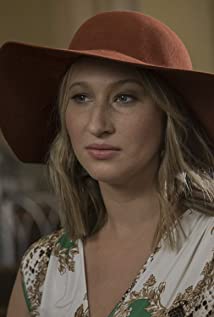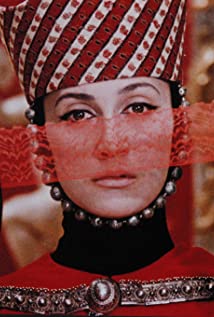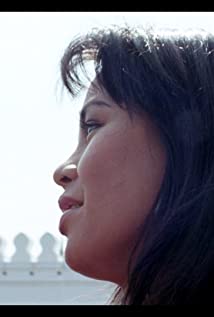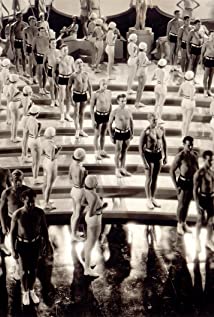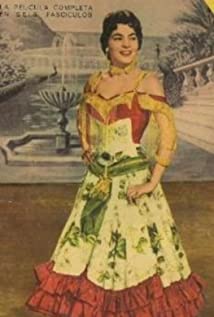
As per our current Database, Lilián de Celis is still alive (as per Wikipedia, Last update: May 10, 2020).
Currently, Lilián de Celis is 89 years, 2 months and 19 days old. Lilián de Celis will celebrate 90rd birthday on a Friday 31st of January 2025. Below we countdown to Lilián de Celis upcoming birthday.
| Popular As | Lilián de Celis |
| Occupation | Actress |
| Age | 89 years old |
| Zodiac Sign | Aquarius |
| Born | January 31, 1935 (Fíos, Parres, Asturias, Spain) |
| Birthday | January 31 |
| Town/City | Fíos, Parres, Asturias, Spain |
| Nationality | Spain |
Lilián de Celis’s zodiac sign is Aquarius. According to astrologers, the presence of Aries always marks the beginning of something energetic and turbulent. They are continuously looking for dynamic, speed and competition, always being the first in everything - from work to social gatherings. Thanks to its ruling planet Mars and the fact it belongs to the element of Fire (just like Leo and Sagittarius), Aries is one of the most active zodiac signs. It is in their nature to take action, sometimes before they think about it well.
Lilián de Celis was born in the Year of the Pig. Those born under the Chinese Zodiac sign of the Pig are extremely nice, good-mannered and tasteful. They’re perfectionists who enjoy finer things but are not perceived as snobs. They enjoy helping others and are good companions until someone close crosses them, then look out! They’re intelligent, always seeking more knowledge, and exclusive. Compatible with Rabbit or Goat.



Lilián de Celis had a very uneven career both as an actress and as a singer. However, at one point she was immensely popular in Spain on the strength of a few recordings, one film and several stage musicals.
Lilián Ángela de Celis Collia was born in Fíos, Parres, province of Asturias, in Spain, on January 31, 1935. Very little is known of her family or her early years, but by the mid 50s she was a voice and music student at Madrid's Conservatory.
In those days, Maestro Indalecio Cisneros was the musical director for a successful radio show titled "Aquellos Tiempos del Cuplé" (Those Times of the Cuplé) which took a nostalgic look at the songs that were popular during "la belle époque.
" The show had a basic format: in each edition it featured different vocalists who would sing the required songs or "cuplés" while a couple of sentimental senior citizens remembered the good old days.
On a visit to the Conservatory, Maestro Cisneros heard Lilián and invited her to sing in the show. The young woman made a favorable impression on the listeners and was asked back to perform becoming part of the regular cast.
As her popularity increased, Miss de Celis was signed by Discos Columbia and recorded some of the songs she performed on the radio show. Shortly after that, she married Columbia's musical director Maestro Manuel Monreal.
However, after these auspicious beginnings, the broadcast was canceled and the singer's future became uncertain. But not for long.In 1956, film producer and director Juan de Orduña was having trouble launching his own "cuplé" project.
It has not been proven if Mr. de Orduña was influenced by the nostalgic radio show featuring Lilián, but the fact remains that he was working on a film which exploited the nostalgia for "la belle époque" and the "cuplés" in much the same way.
The musical was titled El último cuplé (1957) and its filming was plagued by financial woes since no investor wanted to touch it. That in spite of the fact that the film star was beautiful Hollywood starlet Sara Montiel, the Spanish actress-singer who had by then secured a promising career in the US (Vera Cruz (1954), Serenade (1956), Run of the Arrow (1957).
)"El Último Cuplé" was finished somehow and by the end of 1957 it was the highest grossing film in the history of Spanish cinema creating a veritable "Saritamania" in Europe and Latin America. The soundtrack from the film was a huge success and the songs by Montiel were dominating the hit parades everywhere.
Sarita Montiel had become a national treasure for Spain and in 1958 she was brought back from Hollywood to star in La violetera (1958), a high budget production which exploited the same elements as "El Último Cuplé" with a nostalgic "belle époque" setting and lots of songs from that era.
Actually, Spanish cinema turned exclusively to nostalgia musicals and the producers were looking desperately for singers who could produce the same results on the screen as Miss Montiel. It was natural that someone would remember Lilián de Celis' radio show and the singer was hired immediately to star in Aquellos tiempos del cuplé (1958).
The publicity launched her as "Sarita Montiel's rival" and a national debate over who was the better singer of "cuplés" made headlines. It was true that Lilián possessed a better trained voice and that she was a good looking lady but she could not compete with Sarita, who substituted vocal prowess with a fresh eroticism that made history by defying the strict censorship of the Franco regime.
Writer Terenci Moix stated: "Montiel brought eroticism to Spanish cinema and for that she deserves a monument."It must also be taken into consideration that Sarita's photogenic beauty and charisma hypnotized moviegoers like no one else before or after her, so while "La Violetera" was stopping traffic at a theater on La Gran Vía Avenue, Miss de Celis' film ran quietly at another nearby theater.
The same thing happened with their recordings. Montiel's sold like hot cakes while de Celis were purchased by the curious or "the purists" who sustained their preference for Lilián's more traditional and conservative sounds.
The controversy has lasted through the years.However, it was obvious to the industry that Lilián de Celis could not compete, less surpass the cinema appeal of her sexually charged "competitor" so the singer turned to the stage where she had a mild hit with a musical revue aptly titled "Aquellos Tiempos del Cuplé.
" Other revues followed which kept her busy in Spain between 1959 and 1960 when she was called again to star in the film Los claveles (1960), a spruced-up version of the zarzuela (operetta) which did not produced satisfactory results.
The same can be said of her following three films Alma aragonesa (1961), Las estrellas (1961) and the movie filmed in 1963 Júrame (1964). We would have to hire a private investigator in Spain to find somebody who saw those films or even heard of them.
None of her movies after "Aquellos Tiempos del Cuplé" were released in America.In 1963 Lilián decided to try her luck in Mexico (as Montiel had done some years before), but again there's not much information about her activities there.
She probably worked on the stage for a while and then took fourth billing in a low budget musical film called Los apuros de dos gallos (1963). Later in 1965 she appears in the weird transsexual-themed film Me ha gustado un hombre (1965) (she was given third billing on this one), a movie considered "one of the worst ever since Ed Wood's Glen or Glenda (1953)".
She disappears from film credits for 10 years and makes a much-touted comeback in Spain with Yo fui el rey (1975), which did not impress anybody and is her last film to date. Her filmography also boasts another title, Canciones de nuestra vida (1975), an anthological film made of film clips from other movies.
From then on, Miss de Celis turns fully to stage and night club work in Spain. She also shows up occasionally on television singing one of her nostalgic "cuplés" or on gossip columns trying to revive the old controversy of who is a better singer, Miss Montiel or her.
.. It was ironic that Lilián accepted in 1992 an one-time invitation to sing one song on Sara Montiel's television show "Ven al Paralelo." In order to dispel any notion of rivalry, Montiel introduced de Celis as "the original cuplé singer .
.. she really knows how to sing." Observers could not help but notice that on this show Lilián's one song was preceded and followed by Montiel's four songs, comedy sketches and numerous appearances in different gowns as if to say "do not forget who is boss here.
.." In 2005 Lilián de Celis made the headlines again due to the showing of her films at a Festival in her homeland of Asturias. One can only hope that in the near future her filmography becomes available on DVD to give everybody the chance to judge her entire body of work.


